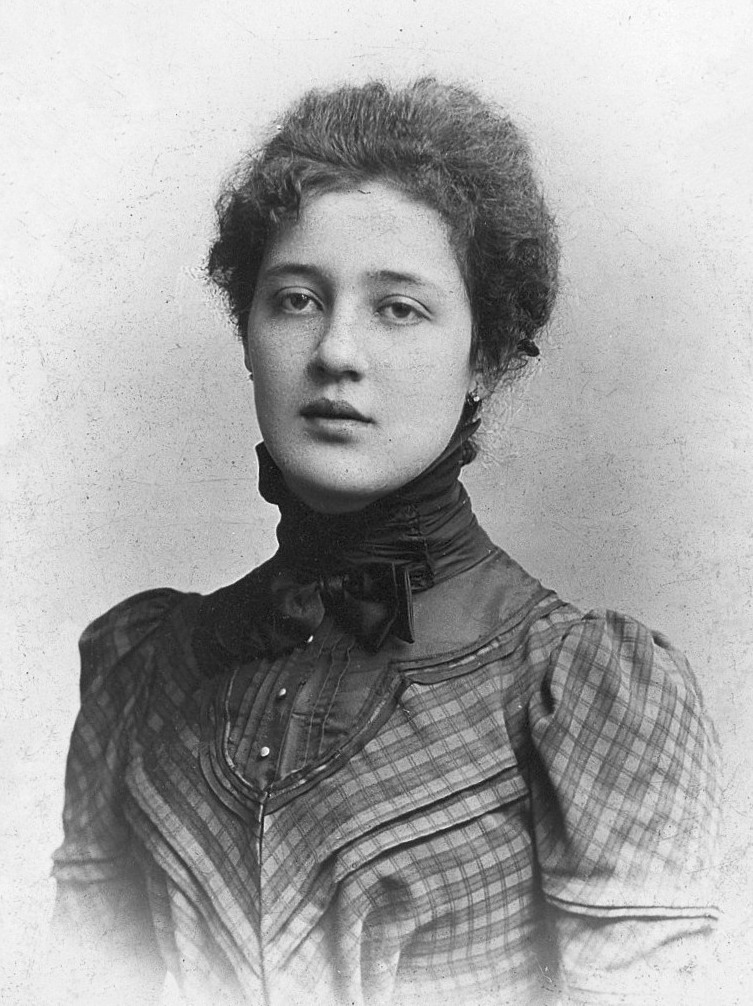

Queer
Places:
Golders Green Crematorium
Golders Green, London Borough of Barnet, Greater London, England
 Melanie
Klein née Reizes (30 March 1882 – 22 September 1960) was an
Austrian-British author and
psychoanalyst who is known for her work in
child analysis. She was the primary figure in the development of
object relations theory. Academic debates concerning the meaning of lesbianism
in the last quarter of the twentieth century frequently have turned upon the
interpretation of same-sex desire and identification within psychoanalytic
theory. Influenced by the writings Julia Kristeva, Luce Irigaray, Helene
Cixous, and Melanie Klein, many theorists argue that the crux of
lesbian desire lies in the preoedipal relation between mother and daughter,
which they privilege as a primordial intimacy.
Melanie
Klein née Reizes (30 March 1882 – 22 September 1960) was an
Austrian-British author and
psychoanalyst who is known for her work in
child analysis. She was the primary figure in the development of
object relations theory. Academic debates concerning the meaning of lesbianism
in the last quarter of the twentieth century frequently have turned upon the
interpretation of same-sex desire and identification within psychoanalytic
theory. Influenced by the writings Julia Kristeva, Luce Irigaray, Helene
Cixous, and Melanie Klein, many theorists argue that the crux of
lesbian desire lies in the preoedipal relation between mother and daughter,
which they privilege as a primordial intimacy.
Klein suggested that pre-verbal existential anxiety in infancy catalyzed the formation of the unconscious, resulting in the unconscious splitting of the world into good and bad idealizations. In her theory, how the child resolves that splitting depends on the constitution of the child and the character of nurturing the child experiences; the quality of resolution can inform the presence, absence, and/or type of distresses a person experiences later in life.[1]
Melanie Klein was born into a Jewish family and spent most of her early life in Vienna. She was the fourth and final child of parents Moriz, a doctor, and Libussa Reizes.[2]Educated at the Gymnasium, Klein planned to study medicine. Her family's loss of wealth caused her to change her plans.
At the age of 21 she married an industrial chemist, Arthur Klein, and soon after gave birth to their first child, Melitta. While she would go on to bear two additional children, Klein suffered from clinical depression, with these pregnancies taking quite a toll on her. This and her unhappy marriage soon led Klein to seek treatment. Shortly after her family moved to Budapest in 1910, Klein began a course of therapy with psychoanalyst Sándor Ferenczi. It was during their time together that Klein expressed interest in the study of psychoanalysis.
Encouraged by Ferenczi, Klein began her studies by observing her own children.[3] Until this time, only minimal documentation existed on the topic of psychoanalysis in children, Klein took advantage of this by developing her "play technique". Similar to that of free association in adult psychoanalysis, Klein's play technique sought to interpret the unconscious meaning behind the play and interaction of children.
During 1921, with her marriage failing, Klein moved to Berlin where she joined the Berlin Psycho-Analytic Society under the tutelage of Karl Abraham. Although Abraham supported her pioneering work with children, neither Klein nor her ideas received much support in Berlin. As a divorced woman whose academic qualifications did not even include a bachelor's degree, Klein was a visible iconoclast within a profession dominated by male physicians. Nevertheless, Klein's early work had a strong influence on the developing theories and techniques of psychoanalysis, particularly in Great Britain.
Invited by Ernest Jones, Klein moved to London in 1926, where she worked until her death in 1960.
In 1934 Paula Heimann became Melanie Klein's secretary. In 1935 they started working together on analysis and became close associates.
.jpg)
Melanie Klein and Anna Freud
Her theories on human developmenta and defense mechanisms were a source of controversy, as they conflicted with Freud's theories on development, and caused much discussion in the world of developmental psychology. Around the same time Klein presented her ideas, Anna Freud was doing the very same. The two became unofficial rivals of sorts, amid the protracted debates between the followers of Klein and the followers of Freud. Amid these so-called 'controversial discussions', the British Psychoanalytical Society split into three separate training divisions: (1) Kleinian, (2) Freudian, and (3) Independent. These debates finally ceased with an agreement on a dual approach to instruction in the field of child analysis.
My published books: